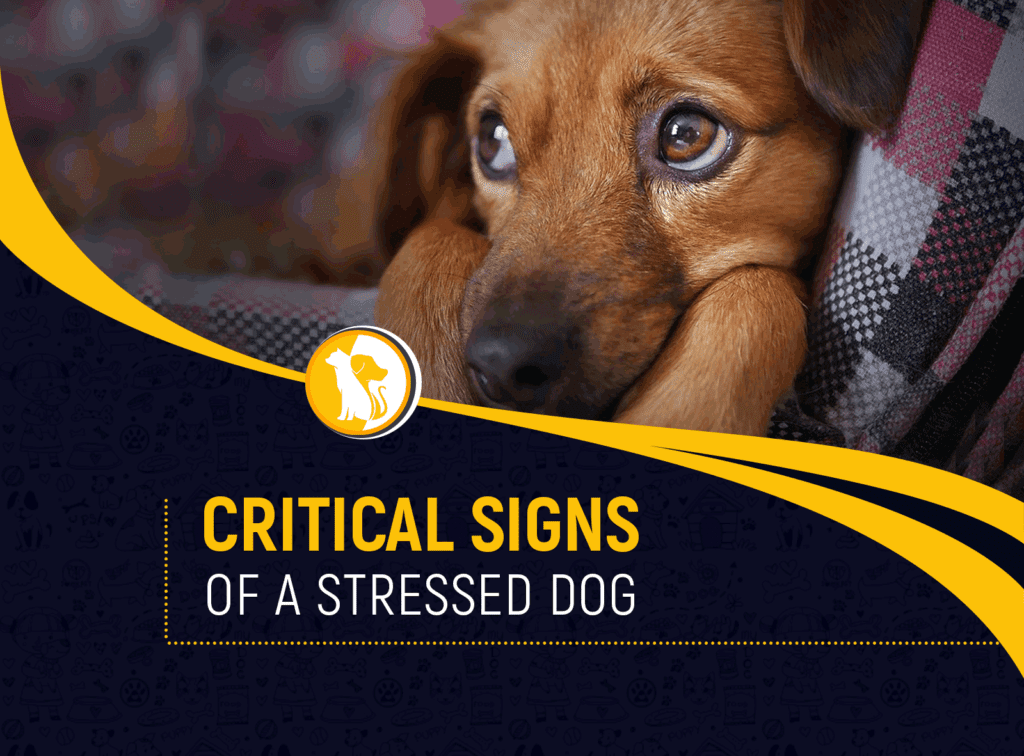
Introduction:
As devoted pet owners, our furry companions play an integral role in our lives, offering unconditional love, companionship, and joy. Just like humans, dogs experience a wide range of emotions, and stress is one of them. Understanding the critical signs of stress in your dog is crucial for ensuring their well-being and happiness. In this comprehensive guide, we’ll delve into the subtle cues and overt behaviors that may indicate stress in your canine friend.
- Body Language Speaks Louder Than Words:
Dogs communicate primarily through body language, and keen observation can unveil a wealth of information about their emotional state. Certain postures and gestures may signify stress, such as:
a. Tail Position: A tucked or lowered tail can indicate discomfort or anxiety.
b. Ears: Pinned-back ears suggest fear or stress.
c. Body Posture: A lowered body, hunched back, or cowering may signify unease.
d. Panting: Excessive panting, especially when not related to physical activity, can be a sign of stress.Understanding these subtle cues is crucial for recognizing stress before it escalates into more severe issues.
- Changes in Behavior:
Stress in dogs often manifests as alterations in behavior. Paying attention to shifts in your dog’s typical demeanor can help identify stress early on. Key behavioral signs include:
a. Aggression or Withdrawal: Dogs may become more aggressive or, conversely, withdraw when stressed.
b. Excessive Vocalization: Whining, barking, or howling more than usual may be a cry for help.
c. Destructive Behavior: Stress can lead to destructive habits like chewing furniture or excessive digging.Recognizing these behavioral changes allows pet owners to intervene promptly and address the root cause of stress.
- Changes in Appetite and Sleeping Patterns:
Stress can significantly impact a dog’s appetite and sleep. Both overeating and loss of appetite can be indicative of stress. Likewise, alterations in sleeping patterns, such as insomnia or excessive sleeping, may signal underlying issues.
a. Changes in Eating Habits: Look out for sudden changes in appetite, eating speed, or interest in food.
b. Sleep Disturbances: Restlessness, constant waking, or difficulty falling asleep can be stress-related.Monitoring these habits can offer valuable insights into your dog’s mental and emotional well-being.
- Avoidance or Seeking Excessive Affection:
When stressed, dogs may exhibit avoidance behaviors or, conversely, seek more attention than usual. Understanding these dynamics can help in responding appropriately:
a. Avoidance: If your dog is actively avoiding certain people, places, or activities, it could be a sign of stress.
b. Neediness: On the flip side, increased clinginess or seeking constant attention may indicate insecurity.Balancing the right amount of attention and space can be crucial in helping your dog cope with stress effectively.
- Environmental Triggers:
Identifying potential stressors in your dog’s environment is essential for creating a supportive and comfortable living space. Common environmental stressors include:
a. Loud Noises: Thunderstorms, fireworks, or loud construction noises can trigger stress.
b. New People or Pets: Introducing new individuals or animals can cause anxiety.
c. Changes in Routine: Dogs thrive on routine, so significant changes can be stressful.By recognizing these environmental triggers, pet owners can take proactive measures to minimize stress and create a more predictable and secure environment.
- Physical Symptoms:
Stress in dogs can also manifest as physical symptoms that may not be immediately apparent. Regular health check-ups and close observation can help detect these signs:
a. Digestive Issues: Diarrhea, constipation, or vomiting may be stress-induced.
b. Excessive Licking or Scratching: Compulsive behaviors like licking or scratching can be stress-related.
c. Changes in Gait: Stress can cause changes in the way a dog walks or moves.Addressing these physical symptoms promptly is crucial, as they may indicate both stress and potential health issues.
- Communication Through Vocalizations:
Dogs express themselves through various vocalizations, and understanding these sounds is essential for decoding their emotions. Certain vocal cues may indicate stress:
a. Whimpering: Whimpering or whining may signal distress or discomfort.
b. Growling or Snarling: Aggressive vocalizations may result from stress or fear.
c. Excessive Barking: Continuous barking, especially when unprovoked, can be a sign of anxiety.By paying attention to these vocalizations, pet owners can gain insights into their dog’s emotional state and respond accordingly.
Conclusion:
Recognizing the critical signs of stress in your dog is a fundamental aspect of responsible pet ownership. By understanding their body language, behaviors, and communication cues, you can create a supportive and nurturing environment that promotes their overall well-being. Remember, each dog is unique, and what may stress one dog might not affect another in the same way. Regular observation, attention to detail, and a proactive approach to managing stressors will help ensure a happy, healthy, and stress-free life for your beloved canine companion.



